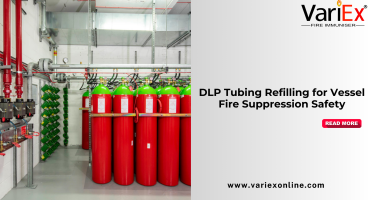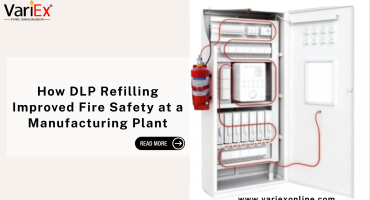![]()
Fire Immuniser
+91-7829629111
Email: info@variex.in
Varistor Technologies Pvt. Ltd.
Block-1, First Floor, Ardente Office One, Hoodi Circle, ITPL Main Road, Bengaluru, Karnataka 560048, IN
What Is A Conventional Fire Alarm System
What Is A Conventional Fire Alarm System
Fire alarm systems play a critical role in promoting safety and security in any given establishment. They not only save lives and assets but also enhance the overall efficiency and functionality of the built environment. They protect property and people from unforeseen fire mishaps by providing early warning signals, even before the fire gets out of hand. Among the various types of fire alarm systems available in the market, conventional fire alarm systems have long been considered the backbone of fire detection and prevention. This article aims to provide a comprehensive overview of what a conventional fire alarm system is, how it works, its components, pros and cons, and importance in modern-day buildings.
 Definition of Conventional Fire Alarm System
Definition of Conventional Fire Alarm System
A conventional fire alarm system, as the name suggests, is the original type of fire alarm system that has been used over the years to detect and notify of the presence of fire. Also known as four-wire fire alarm systems, conventional systems are more straightforward in design and are usually used in smaller properties like individual offices, restaurants, retail shops, and small apartments. They function by dividing the monitored space into different zones, with each zone containing individual fire detection devices, such as smoke or heat detectors and manual call points.
How Conventional Fire Alarm Systems Work
In a conventional fire alarm system, the detection devices and call points spread across different zones within the property are wired back to the central control panel. When a fire incident occurs in any of these zones, the detection device or call point triggered sends a signal to the central control panel. The control panel then identifies the zone from which the signal comes and sets off an alarm. However, the conventional system does not pinpoint the exact location of the fire within that zone. The zone identification provides an idea of where the potential problem may have occurred. Could be in the kitchen, stairwell, office space, or anywhere else defined by the preset zones.
Components of a Conventional Fire Alarm System
A conventional fire alarm system consists of a few essential components which work in tandem to detect, alert, and control fire emergencies. The most critical component is the fire alarm control panel (FACP), often referred to as the heart of the system, which receives information from detectors and call points and controls the alarm sounders. Detectors placed strategically across different zones in the property are either heat or smoke detectors, responding to rapid temperature increase or presence of smoke within their sensor range. Manual call points, such as the traditional red pull stations, allow for human intervention when a fire is noted. Besides, the system comprises notification appliances like bells, horn strobes, sirens or speakers to notify the occupants of a fire incident, and power supplies to bolster operation.
Pros and Cons of Conventional Fire Alarm Systems
Conventional fire alarm systems come with a mix of advantages and disadvantages. On the one hand, they are cost-effective, simple to understand and install, and suitable for small buildings and premises. Their zonal nature allows the narrowing down of a possible fire to a particular section of the building, making it relatively easier for emergency services to respond. On the other hand, a major downfall to conventional fire alarm systems is their lack of specificity. They only point to the zone where the fire is, not the exact location, making them less efficient for larger premises. Additionally, they require more cabling than addressable fire alarm systems, making installation more complex and potentially costlier in larger environments.
The Importance of Conventional Fire Alarm Systems
Despite the relative advancement in fire alarm technology, conventional fire alarm systems still maintain their significance in modern-day buildings. They provide a cost-effective solution for smaller spaces and uncomplicated premises, offering a reasonable level of protection while keeping costs and complexity at bay. They ensure the safety of property and human lives by early detection and warning of a fire event, subsequently facilitating swift evacuation or firefighting actions. The conventional system is also adaptable, making it possible to upgrade or expand them to suit the changing requirements of the premises.
Conclusion
In summary, a conventional fire alarm system is an integral component of the fire safety measures in a building. While it may not offer the sophistication and pinpoint accuracy of newer, addressable systems, its simplicity, cost-effectiveness, and adaptability continue to make it a suitable choice for smaller and less complex premises. Understanding the working, components, pros, and cons of this system is crucial for property owners and managers when considering the ideal fire protection solution that meets their specific needs. As we aim for safer environments, conventional systems continue to play a pivotal role, drawing us closer to a world where fire-related incidents are significantly minimized, if not entirely prevented.
Final Say
At VariEx.in and VariexOnline.com, we specialize in supplying and installing top-quality fire fighting systems and equipment. From fire extinguishers to advanced suppression systems, we offer comprehensive solutions tailored to your needs. Our experienced team ensures precise installation and maintenance for optimal safety.
Trust VariEx for reliable fire protection. Contact us online or call 7829629111 to learn more.
"WHAT YOU CAN READ NEXT"
 Read more +24 November 2023 in Fire Extinguisher
Read more +24 November 2023 in Fire ExtinguisherWhat types of fire extinguishers are available for different fire classes?
 Read more +11 July 2025 in Fire Suppression
Read more +11 July 2025 in Fire Suppression






